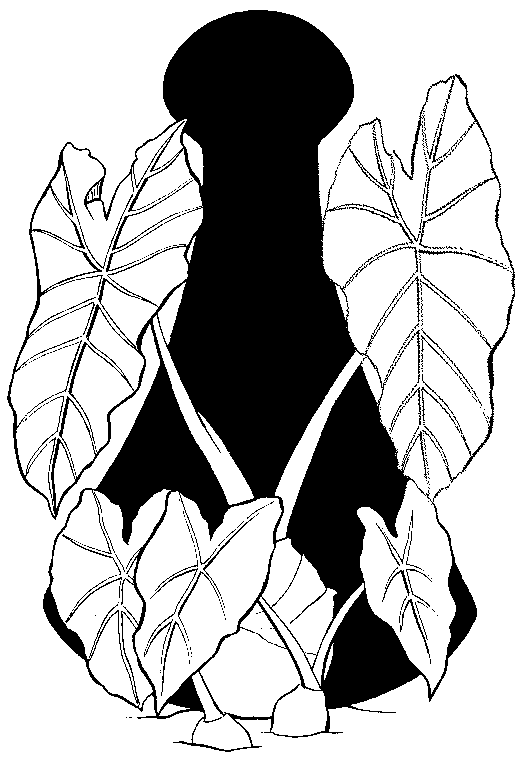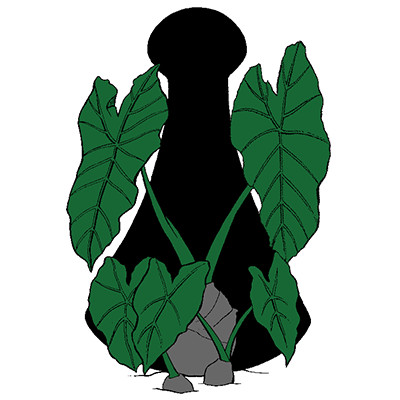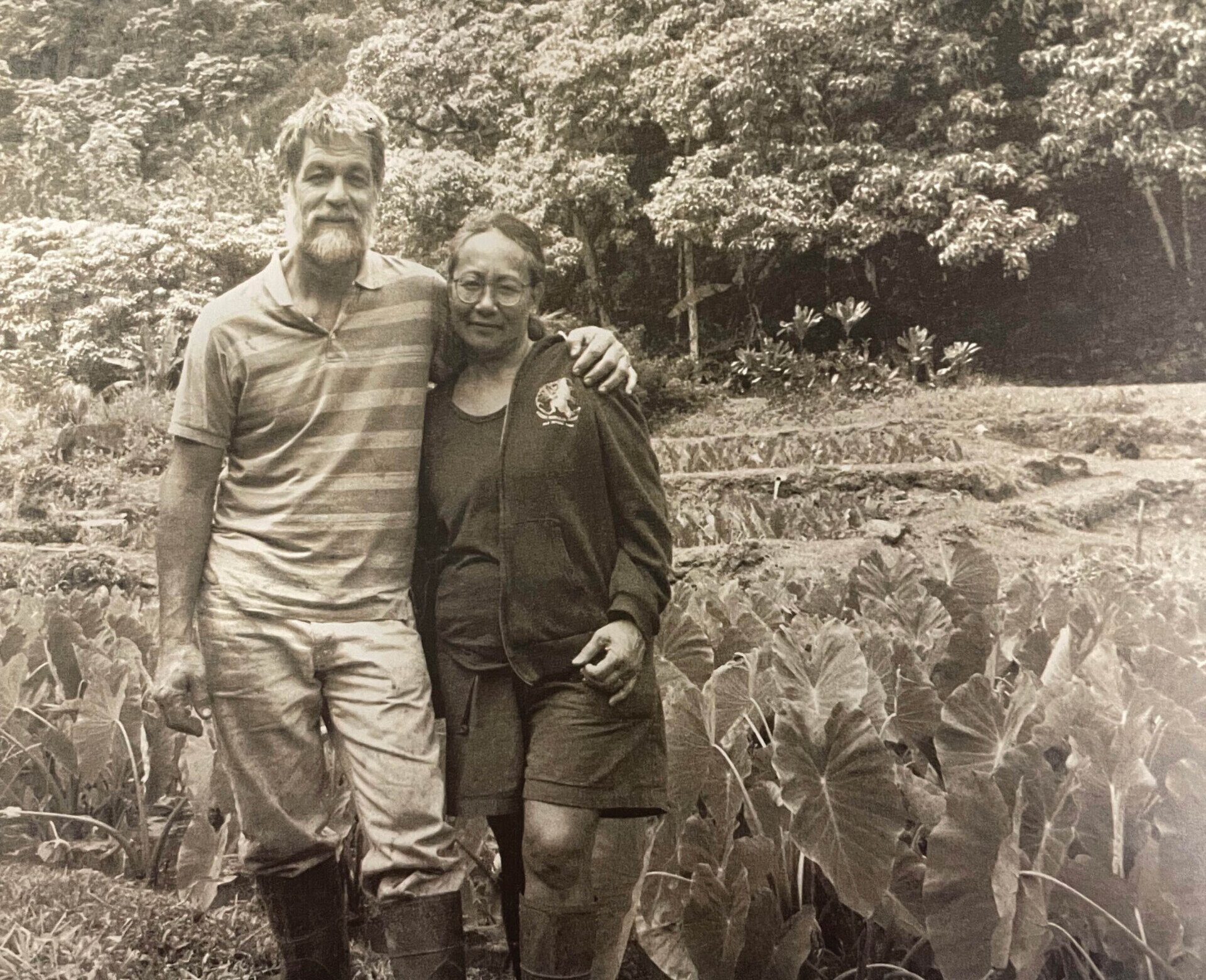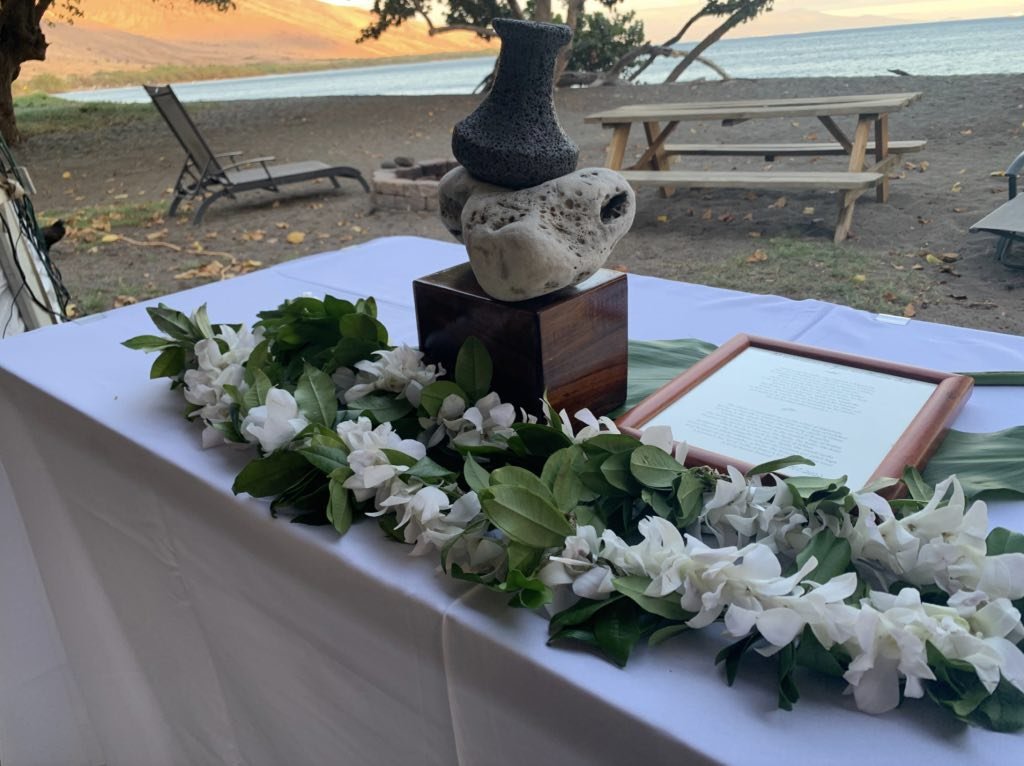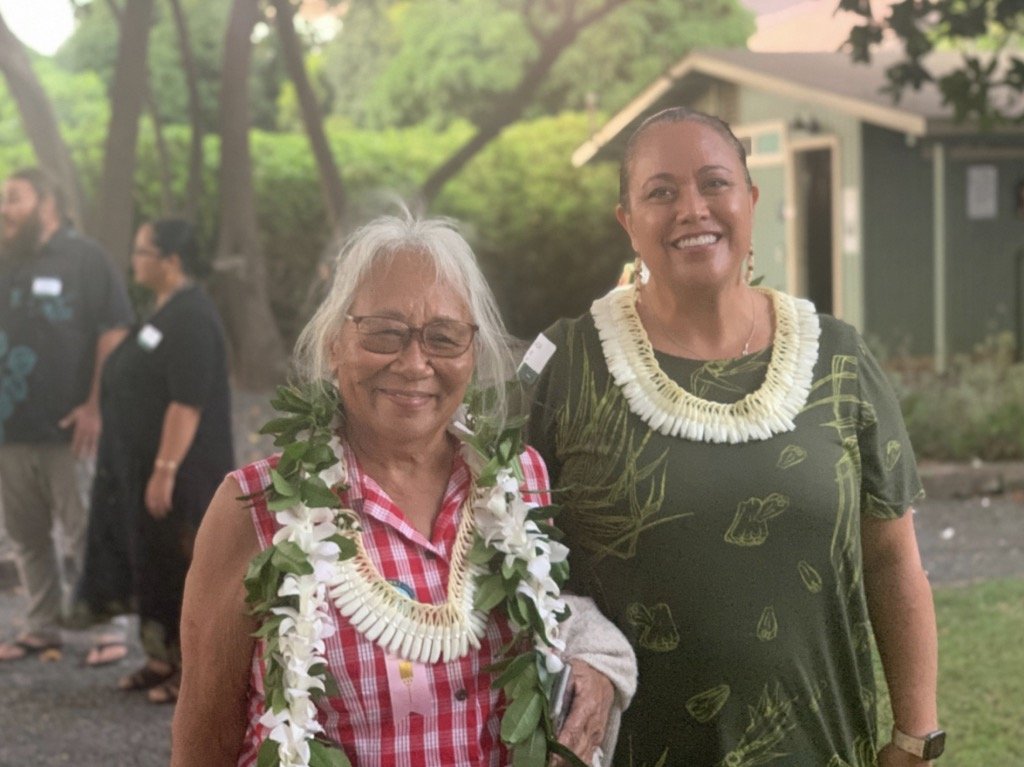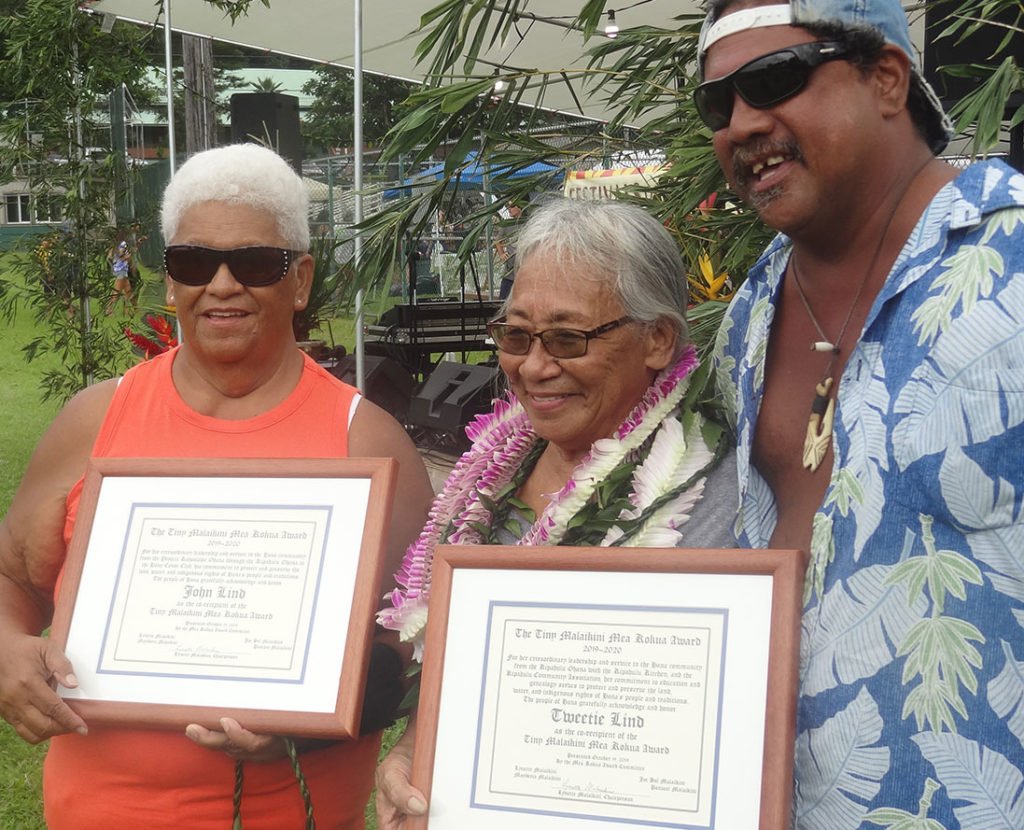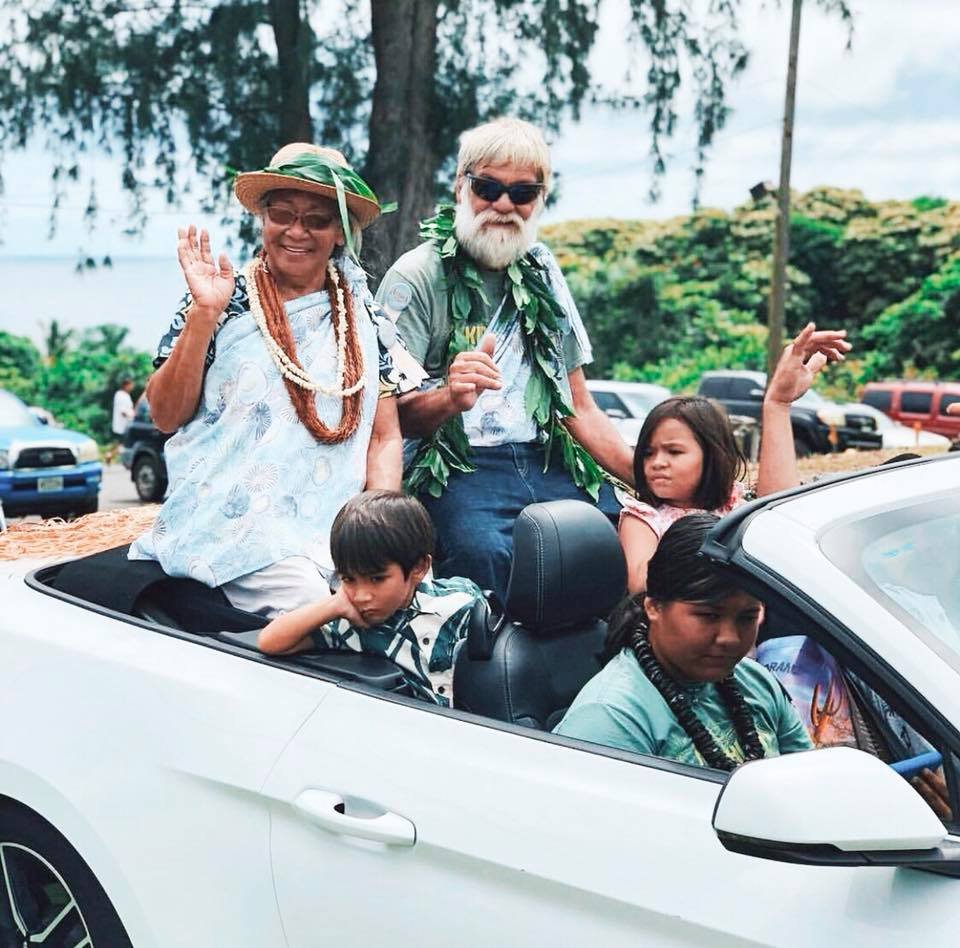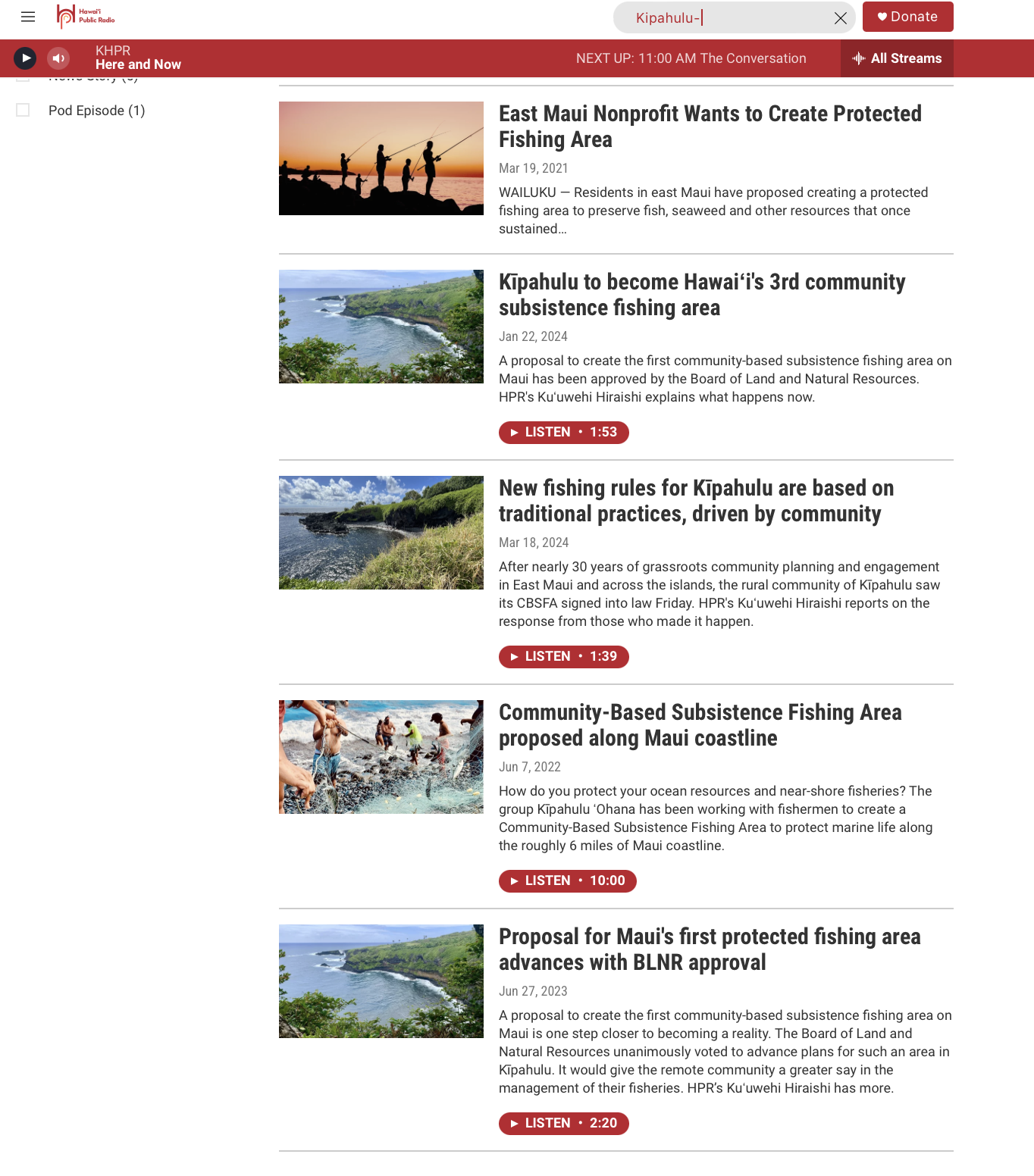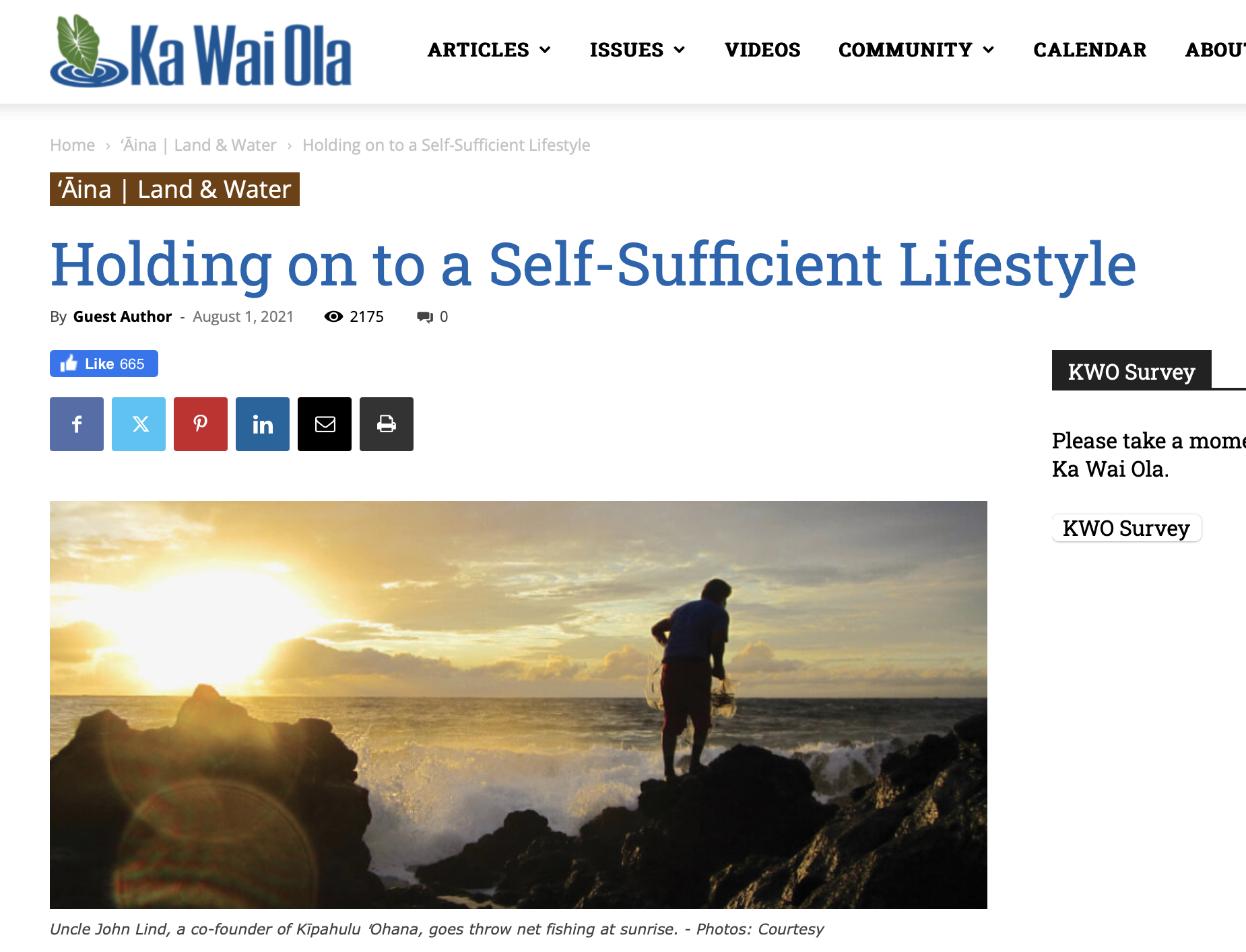PUBLICATIONS
Recent Publications
Hana Side News - Protecting Kīpahulu: Navigating Challenges and Advocating for the Future of CBSFA
Hawaii Public Radio - New fishing rules for Kīpahulu are based on traditional practices, driven by community
Spectrum - Kipahulu on Maui declared a Community-Based Subsistence Fishing Area
Maui News - Kipahulu ‘ohana adds ocean resource management to its mauka-to-makai resources management philosophy
Hana Maui News - Kīpahulu CBSFA
KĪPAHULU, MAUI – Governor Josh Green, M.D., signed Community-Based Subsistence Fishing Area (CBSFA) rules into law for the moku of Kīpahulu in the Hāna District of Maui, Friday. Kīpahulu joins Hā’ena on Kaua’i and Miloli’i on Hawai’i Island, as the third designated CBSFA in the state. Prior to the signing, the Kīpahulu CBSFA rules received unanimous approval by the state Board of Land and Natural Resources.The Kīpahulu community worked with the DLNR Division of Aquatic Resources (DAR), The Nature Conservancy, and other supporters for more than a decade to bring the concept of community-based subsistence fishing to reality.

Kipahulu ‘ohana adds ocean resource management to its mauka-to-makai resources management philosophy
Kipahulu nonprofit moves closer to fishing management vision
Group is trying to regulate harvesting as resources have declined over years
Local fishermen, divers, cultural practitioners and state agencies are getting much closer on a proposed set of boundaries and fishing regulations in Kipahulu.
Awards & Recognitions
-
The Nature Conservancy, Hawai‘i and Palmyra (TNC) announces the presentation of the Kāko‘o ‘Āina Award to John and Tweetie Lind in recognition of their lifelong commitment, enduring partnership and community leadership to protect Hawaiʻi’s lands and waters at a community dinner in Olowalu, Maui.
“The Linds’ passion for preserving Hawaiian culture and way of life and the ʻāina they depend on rings as true today as it did when they began their advocacy work over 50 years ago,” said Ulalia Woodside Lee, the executive director of TNC’s Hawai‘i and Palmyra Program. “They have demonstrated phenomenal leadership and contributions to our island home and the people of Hawaiʻi.”
Established in 2006, TNC’s Kākoʻo ʻĀina award honors groups and individuals who have provided significant and long-standing support for conservation in Hawai‘i. “Kako‘o ‘Aina” translates to “one who supports the land.”
John and Tweetie Lind established Kīpahulu ʻOhana and Kapahu Living Farm to revive and restore loʻi kalo farming used for centuries by Hawaiians. They led their community to create a mālama i ke kai (care for the ocean) community action plan and worked for 10 years to establish the Kīpahulu Moku Community Based Subsistence Fishing Area, a legally designated area that, once approved, the community and state government will co-manage.
The Linds brought together East Maui communities facing similar issues in maintaining their culture, resources and lifestyle through the Maui Nui Makai Network, which led to the establishment of the Maui Hikina Huliāmahi, a community-led initiative for regional makai management across multiple moku (districts).
The Kākoʻo ʻĀina award gift this year is a pōhaku kuʻi ʻai, a poi pounder made from river pōhaku (rock), mounted on coral from the sea and old growth koa from Honokohau valley, symbolizing the the mauka to makai work of John and Tweetie in Kīpahulu.
Tweetie Lind, the Lind Family, and the people of Hawaiʻi lost a tireless aloha ʻāina warrior in John Lind in June. In the words of their daughter Leimamo Lind-Strauss, “He was a mahiʻai (farmer), a lawaiʻa (fisherman), the Konohiki of Kīpahulu—a visionary that never stopped dreaming of living the life of a simple kalo man.”
-
Oct. 19, it was announced that the 2019 Tiny Malaikini Mea Kokua Award — the community’s highly coveted recognition for public service — was awarded to co-recipients John Lind and Tweetie Lind.
The couple were chosen because they are founders of the Kipahulu Ohana, a land-based nonprofit most well-known for the Kapahu Living Farm near Oheo Gulch that grows traditional Hawaiian wetland taro and provides educational programs for Hana’s youths and other groups. In addition, they were important in the restoration of the Wailua Loi. They also operate the certified commercial Kipahulu Kitchen at Kalena Center to help process the foods grown in Kipahulu.
They are founders of the Hana District Pohaku to help Hawaiians reconnect with the land. And they have fought for indigenous land rights throughout East Maui.
As far back as 1977, they were active participants in the Protect Kahoolawe Ohana, which, after many years of struggle, successfully got the island of Kahoolawe returned to the State of Hawaii.
With others, they helped found the Hana Canoe Club, the Hana Surf Club, the East Maui Taro Festival and the Kauiki Council. Later, they helped form the Na Mamo O Muolea organization that eventually was able to get the County of Maui to purchase Muolea Point for protection and preservation.
Not active just on land but also in the ocean, they developed the Kipahulu Community Based Fishing Subsistence Area with a goal of having a fishing preserve that is indigenous, sustainable and pono. Through that they do shoreline management and support an opihi “rest area,” a no-take zone next to Haleakala National Park, and they were the 2018 grand marshals for these Festivals of Aloha.
John Lind is a lifelong farmer, fisherman, hunter and butcher, as well as a spark plug for many substantive organizations that help the people of Hana over many decades. He is a traditional konohiki of the Kipahulu moku and is an entrepreneur for the Kapahu Living Farm. He served on the Hana Community Advisory Committee for the Hana Community Plan update. And he was awarded the 2008 Hawaii Tourism Authority’s “Keep It Hawaii” individual award.
For two decades, Tweetie Lind hosted educational groups and interpretive hikes at Kapahu Living Farm. With her focus on the education and genealogy for Hana’s ohana, she helps to preserve Hana’s culture and traditions. She is manager of the Kipahulu Kitchen. For many years, she was the chair of the ag tent committee for the East Maui Taro Festival. She served on the HTA tourism strategic planning committee and was president of the Kipahulu Community Association.
Established in 1992, the Malaikini Award is awarded annually for the person who has given most selflessly for the betterment of the Hana community.
-
Aloha Pu’uhonua ‘o Hana. We are proud to recognize our 2018 Grand Marshalls, Hāna’s own John and Tweetie Lind. John and Tweetie are the co-founders of the Hāna District Pohaku, Hāna Canoe Club, co-founders of East Maui Taro Festival, the Kauiki Council, and their land-based 501(c)(3) nonprofit group, the Kīpahulu Ohana. They’re residents of Kīkoʻo, Kīpahulu, Maui.
Their love for the ‘aina is better understood through their active participation in various Indigenous Grassroots organized events, including the 1977 Kahoʻolawe Movement to end the US Navy Occupation of Kahoʻolawe as a military bombing target, which officially ended in 1994 with the return of Kahoolawe to the State of Hawaiʻi. The State of Hawaiʻi has a responsibility to the Kanaka Maoli interest, including preserving the island of Kahoʻolawe in a trust for a sovereign native Hawaiian entity. In Kīpahulu, they defended Kanaka human, cultural, and property rights from the Haleakalā National Park expansion via the 1982 Kīpahulu Condemnation of indigenous kanaka land titles in the proposed Kīpahulu, Hāna and Kaupo Moku. They’re passionate of all the issues facing the future of Hāna and Maui Nei.
John would like to recognize his Parents and former Kīpahulu Ranch Manager John Crichton “Jack” Lind and Daisy Ka’eka Mailou. Tweetie would like to recognize her parents John Helekahi and Josephine Librando-Kaho’opi’i. Together we would like to celebrate the cherished memories of the Kupunas of the Ka’uiki Council including Michael Pu’uwiki Minn, Larry Kaikala, Parley Kanakaole, Richard Keohuhu, Peggy Ha’o Ross, Nani Kaina, Peter Konohia, Apolonia Day, Papa Harry Mitchell, Ellen, Bill, and Margret Kauimakaole, Murray & Violet English, Tevi Kahaleuahi, Joe Daniels, and all the kupunas who came before us.
Tweetie is the current President of the Kīpahulu Community Association and her focus is education and genealogy amongst the 'Ohana of Hāna, while John is a taro farmer, fisherman a true Hawaiian Patriot and a traditional Konohiki.
-
Hanau ka ‘Aki‘aki noho i kai Born was the tough seagrass living in the sea Kia‘i ia e ka Manienie-‘aki‘aki noho i uka Guarded by the tough sea grass living on land The cultural practices of Po’e Hawaii thrive in small communities in Maui Hikina - East Maui.
Aloha na po’e o Hāna – Ka ‘Āina o ka Ua Kea Noenoe, Ka ‘Āina o ka Lani Haʻahaʻa. Co-Grand Marshalls from the Kīpahulu Moku are brothers Kaneholani and Pekelo Lind. Lineal descendants of Maui Hikina and proud graduates of Hana High and Elementary School, they are both 10th generation Hawaiian practitioners.
They are fishermen, farmers, kalo growers and hunters, as well fathers, who love their families and raise them to carry the traditional ways of life. For over ten years both brothers, along with the community of Kipahulu, and spearheaded by their father the late John Lind, have been involved in policy, making rules to care for our fish and ocean resources in Kipahulu moku, from mauka to makai, working with State of Hawaii process to allow Kipahulu a chance at a marine reserve C.B.F.S.A. or Community Based Fishing Subsistence Area, expected to be heard by the BLNR sometime in early 2023. Together as a community let us thrive to take the high road and protect the ʻāina and marine resources through generations of kilo or observations and, “Kū i ke ʻAki” or “Stand Upon the Highest Point.”
Kīpahulu ʻOhana Virtual Huakaʻi
This virtual huakaʻi created by students from Hāna School explores the Kīpahulu moku of East Maui.
The students visit Kapahu Living Farm and interview the founders Uncle John and Aunty Tweetie Lind of Kīpahulu ʻOhana. The film also shares more about Kīpahulu ʻOhana’s Mālama I Ke Kai programs including the ʻopihi rest area and plans to create a Community-Based Subsistence Fishing Area (CBSFA).
Join our virtual classroom to see the activities that go with this video for grades 8-12 www.mauihuliaufoundation.org/classroom
Past Publications
-
How do you protect your ocean resources and near-shore fisheries? The group Kīpahulu ʻOhana has been working with fishermen to develop rules to create a Community-Based Subsistence Fishing Area to protect marine life along the roughly 6 miles of Maui coastline. The proposed Kīpahulu CBSFA is from Kālepa Gulch to Pua‘alu‘u Gulch.
Listen to the Conversation - Kipahulu Moku
The Conversation sat down with Executive Director Scott Crawford about the work that began over a decade ago.
The virtual public scoping session on Tuesday, June 7 runs from 5:30 p.m. to 7:30 p.m. This interview aired on The Conversation on June 7, 2022. The Conversation airs weekdays at 11 a.m. on HPR-1.
-
WAILUKU — Residents in east Maui have proposed creating a protected fishing area to preserve fish, seaweed and other resources that once sustained neighboring communities.
The nonprofit Kipahulu ‘Ohana said designating waters off an area called Kipahulu Moku as a community-based subsistence fishing area would address problems like people collecting fish and seaweed out of season, people taking more than they need and the hunting of undersized specimens, The Maui News reported.
The small town of H??ena on Kauai's north shore won state permission to establish Hawaii's first community-based subsistence fishing area in 2015.
State law allows for the formation of the districts to protect fishing practices traditionally exercised by Native Hawaiians for subsistence, cultural and religious purposes. Community leaders on Molokai are also seeking to designated such an area there.
Kipahulu Moku covers about 12,000 acres (4,856 hectares) in the eastern part of Maui where families have fished, farmed and hunted for generations.
Over the past decade, Maui residents and visitors have been “overusing” Kipahulu’s resources and leaving their trash behind, furthering the need for steps to limit damage, said Kane Lind, the nonprofit's equipment manager and program assistant.
“It’s like a road that everybody drives over but nobody fixes it. Nature can’t fix itself, people have to realize it,” Lind said.
Nonprofit leaders said the most pressing issues were the unsustainable harvest of fish, seaweed and “opihi,” a mollusk that grows on rocky shorelines and is considered a delicacy.
Proposed regulations would limit each person’s daily catch.
Kipahulu ‘Ohana submitted its proposal to the state Department of Land and Natural Resources in 2019 and has since been gathering community input.
The department will begin to hold informational meetings and finalize rules this spring. By the summer, a request for public hearings will be submitted, said Scott Crawford, the nonprofit's executive director.
Kipahulu ‘Ohana hopes to win approval for the plan by next year.
-
The residents of Kīpahulu live off the grid.
They generate their own power, obtain water through catchment systems and streams, and grow, gather, raise and catch their own food. The only public utility servicing the area is Hawaiian Telcom. It is a quiet, self-sufficient lifestyle.
Located on the southeast side of Maui, about 10 miles southwest of Hāna town, the moku (district) of Kīpahulu is a traditional fishing, farming, hunting, and gathering area that sustained a substantial Native Hawaiian population for centuries.
Yet despite its remote location and quiet lifestyle, the moku attracts more than one million visitors every year.
In order to preserve the area’s culture and customs, in 1995, Uncle Mike Minn, Uncle John Lind, and Auntie Tweetie Lind founded the Kīpahulu ʻOhana. This grassroots Hawaiian nonprofit organization is dedicated to ensuring the cultural sustainability of Kīpahulu Moku. Their goal is to enable families in the community to work together to not just preserve, but to enhance their traditional cultural practices.
Photo: A community akule harvest at Lelekea
A community akule harvest at Lelekea. Residents of Kīpahulu have been proactive about protecting their sustainable subsistence lifestyle.
A key strategy to accomplish this is through culturally based agricultural and resource management projects, mauka to makai.
Their flagship project is Kapahu Living Farm, a traditional Hawaiian wetland taro farm, managed through a partnership agreement with Haleakalā National Park. Ancient loʻi kalo have been restored on the farm, and other canoe plants like ulu and maiʻa are also grown. Poi and other products grown and produced on the farm are processed at their certified kitchen for distribution in the community. They also have an educational component, and host schools and community groups at the farm.
As part of their ahupuaʻa approach to resource management, Kīpahulu ʻOhana also focuses on shoreline and near-shore stewardship. In 2012, they developed the Kīpahulu Moku Mālama i Ke Kai Community Action Plan with input from fishermen, cultural practitioners, scientists, and other community members.
Photo: Conducting an ʻopihi population survey
Conducting an ʻopihi population survey in a protected area. Kīpahulu Valley is in the background.
There is growing concern about unregulated and over-harvesting of marine resources – including harvesting undersized individuals, harvesting species out of season, or harvesting during spawning times – which leads to decreased productivity and diversity.
Over the years, unsustainable harvesting has resulted in the decline of marine resources and the community became increasingly frustrated with the ineffectiveness of state-level management and one-size-fits-all rules that don’t always account for local cultural and ecological factors.
In response, Kīpahulu ʻOhana proposed the designation of Kīpahulu Moku as a Community Based Subsistence Fishing Area (CBSFA).
Hawaiʻi’s CBSFA designation formally recognizes local communities as valued partners in protecting natural resources and reaffirms and protects traditional and customary practices for subsistence and culture. CBSFAs are place-based, community-driven, and are the only type of fishery or marine management designation in Hawaiʻi that protects traditional subsistence practices and Hawaiian lifestyles that depend on these resources in addition to protecting the fish population.
CBSFA designation and a collaborative management plan can help change fishing behavior, allowing fish populations to stabilize and recover. Which, in turn, will ensure that future generations also have access to marine resources.
Once this status is approved, conservation measures for Kīpahulu will be enforceable at the state level. However, Kīpahulu ʻOhana’s focus is on education and outreach, so fishermen understand the reasons behind them and the importance of lawaiʻa pono practices.
For years, Kīpahulu ʻOhana has been conducting outreach activities to gather input and grow support for CBSFA designation. In October 2019, they submitted their Kīpahulu Moku CBSFA Proposal and Management Plan to the State Division of Aquatic Resources.
The proposal includes management recommendations such as expanding the seasonal closure for moi and ula by two months, as recent studies indicate active spawning beyond the current season. It also recommends adding a maximum size along with the existing state minimum size for key species to protect “prime spawners” who contribute to the reproduction of those fish populations and suggests creating a puʻuhonua, or a no-fish zone, to allow diverse species to spawn and reproduce. The proposal also encourages lawaiʻa to move from a “trophy fishing” mindset of biggest is best, and to focus instead on lawaiʻa pono – feeding their families now and in the future.
A founding member of the Maui Nui Makai Network (mauinui.net), Kīpahulu ʻOhana, along with other network members, is actively supporting other rural communities in Maui Hikina (East Maui), from Keʻanae to Kaupō, to develop their own makai management plans and programs. By working together, communities across East Maui are moving towards the development of a regional makai management strategy.
For more information about the Kīpahulu Moku CBSFA, including the full rules proposal and management plan, go to kipahulu.org/cbsfa.
Scott Crawford has served as executive director with Kīpahulu ʻOhana for the last 20 years, supporting traditional Hawaiian agriculture, shoreline and forest management. He works with East Maui grassroots Hawaiian organizations to protect and manage precious lands and shorelines in East Maui for traditional subsistence lifestyles, from mauka to makai.
https://kawaiola.news/aina/holding-on-to-a-self-sufficient-lifestyle/
-
More than 25 years ago, native Hawaiian residents John and Tweetie Lind, along with Mike Minn, came together to restore the ancient lo’i (wetland taro patch) at the Kapahu area of Kipahulu, near the Ohe’o stream. This was the humble beginnings of Kipahulu ‘Ohana, Inc., a non-profit organization dedicated to reviving, restoring and sharing the practices of traditional Native Hawaiian culture. The ‘Ohana’s mission is to educate residents and visitors alike, of the “ways of old” through cultural demonstrations and hands-on activities.
Since a formal cooperative agreement was established with Haleakalā National Park in 1995, the ‘Ohana has managed the lo’i and its agricultural and educational programs. Now known as Kapahu Living Farm, Kipahulu ‘Ohana is responsible for producing poi and other products to share with their community. Other programs under the ‘Ohana’s management include: a 9-acre pasture and fruit orchard on state leased land; a shared-use certified commercial kitchen and agricultural processing facility; and the Mālama I Ke Kai community-based marine management plan.
With the onset of the pandemic, Uncle John and Aunty Tweetie pivoted the ‘Ohana’s focus on educational groups and tours, towards a concentration on farming the land. Along with the loʻi, they stayed busy tending to cattle and chickens, while planting and maintaining their vegetable gardens. Soon after, they were harvesting cucumber, eggplant and long beans, in addition to their existing crops of kalo, ulu, mai’a (banana), citrus, starfruit, avocados and more.
“We decided to join the Hāna Farmers Market to share the excess produce from our bountiful garden. We offer ingredients enjoyed in the kitchens of our local Hawaiian community, such as Calabash squash (green Hawaiian squash), ulu, wing beans, green onion, kalo and poi. I enjoy watching everyone bring up all the boxes of vegetables from the farm. Thinking, ‘wow, we grow all that!’” ~Aunty Tweetie Lind
The Linds have been farming in Kīpahulu for more than 6 generations. John Lind Sr. (Jack) was the Ranch Manager for Kīpahulu Cattle Company, while his wife, Daisy was ʻmana leoʻ an original ʻōlelo Hawaiʻi speaker. Together they raised their family teaching them “the Hawaiian way” focusing on the importance of conserving both their cultural heritage and the environment. Back then, they were known for growing zucchini, watermelon, sweet corn and bananas.
“We’ve raised and fed nine keiki plenty of shoreline fish in our ‘ohana’s kitchen. Whether it was prepared raw, seared or steamed, we often tried to include poi and a vegetable. We provided everything on the table and encouraged our kids to try, teaching them not to make funny faces or smell the food out of respect” ~Aunty Tweetie Lind
During the pandemic ‘shut-down,’ the ‘Ohana also made distributions of fruit and vegetables, fish and meat to families from Kīpahulu, Kaupō and Kahikinui, as well as the Maui Food Bank. Their farm stand in Kīpahulu is currently still closed, with hopes to reopen and again talk story with visitors soon.
This week, visit Kīpahulu ‘Ohana at the farmers market and meet Kaʻuiki, Uncle John and Aunty Tweetie’s son. They’ll be offering fresh bags of poi, raw and cooked kalo, cucumbers, eggplant, bitter melon, long beans, squash and bananas.
Visit their website at kipahulu.org to learn more about their programs.
